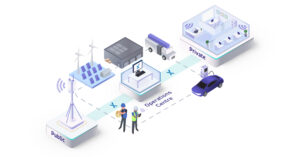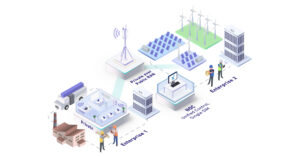Simplifying Mobile Network Connectivity for Next-Generation Devices
We’re moving into an era where business operations and profitability depends on automation using connected devices. Ensuring seamless network connectivity is essential. However, limitations with existing connectivity solutions must be overcome to meet the requirements of modern devices.
Understanding the Playing Field
Next-generation devices are not a one-size fits all model. For every industry and individual business investing in modernization there are numerous devices they might deploy, all selected to automate or augment a specific business operation. While the purpose of the devices varies significantly, their connectivity profiles will typically fall into one of three categories:
- Assets that operate solely at corporate locations: These assets range from fixed equipment such as line machinery and video surveillance equipment and are now diversifying into highly mobile devices such as warehouse picking robotics and autonomous vehicles.
- Assets operating solely in public domains: While these assets can be mobile (e.g. some fleet vehicles), they are often fixed assets. Equipment such as surveillance cameras. meters and sensors used for monitoring equipment, usage or environmental conditions depend on the wide-area coverage that public networks provide.
- Assets that operate in both public and corporate/home locations: The mobile phone is the original example here – moving from public mobile networks to private Wi-Fi networks seamlessly while ensuring optimal application experience. This category is now rapidly expanding to include connected cars, wearables, AR/VR equipment, drones and other game-changing devices. While these assets could operate solely on the public network, there are cost and operational advantages to connecting to private networks e.g. for large data transfers, software updates etc.
Removing the Barriers for Prototype to Production
With so many components involved in digital transformation programs, from networks to devices to software, the underperformance of any one component jeopardizes success. This is further complicated with the infancy of so many of the technologies in use, along with the high impacts of failure if critical devices fail. Traditional connectivity is one component that is stalling modernization progress – it does not deliver the secure, always-on, available anywhere access required.
To move beyond trials and progress to production, businesses need to determine how they can simplify the complexity of their modernization programs including the connectivity layer.
This means addressing these fundamental requirements in their enterprise connectivity strategy:
- Multi-site and multi-device support: Enterprises will struggle if they deploy multiple connectivity solutions to suit the needs of specific business units or devices. Beyond the unnecessary resource costs there is a substantial increase to operational risk including security breaches, outages and data compliance issues. Having a unified connectivity strategy across private and public locations that supports all types of connected devices is foundational for smooth, cost-effective modern operations.
- Seamless connectivity between networks: Today’s highly mobile devices don’t switch between networks as much as they add one network and may (or may not) drop another – like how a mobile phone’s Wi-Fi or secondary eSIM connection sits alongside the primary SIM connection to the public mobile network. This works for phones because the plethora of apps available maintain transaction persistence so things like streaming entertainment don’t drop out. However, this model doesn’t scale for the vast range of connected devices and networks in the future if every enterprise application needs to manage transaction persistence. Instead, seamless connectivity needs to be managed closer to the network core, so that a single SIM can support the private and public connectivity required for operations. This isolates the impact of network changes from the applications that process the data.
- Coverage and capacity: The availability of both wide-area and localized coverage is needed to support millions of connected devices, with the capacity to manage peak volumes of data and transactions with carrier-grade robustness and redundancy. Given both the limitations of Wi-Fi to support high volumes of critical data, along with the need for wide-area coverage for emerging off-site devices, 4G/5G networks are the obvious answer. It is essential that enterprises consider both 4G/5G private and public RAN capabilities in their connectivity strategy.
- Granular asset visibility and control: Granular visibility and control is a feature of private network operations but is traditionally managed by the mobile operator for public networks. This becomes a bottleneck for the enterprises and an operational nightmare for network operators as the volume of connected devices performing mission critical processes surges. It is imperative that mobile operators implement ways to partition and provide access to their network operations for trusted third parties to directly manage routine changes such as upgrading bandwidth, as well as troubleshooting issues and quarantining or disabling assets for their business devices.
Hybrid Mobility – The Win-Win for Industry Collaboration
Collaboration between enterprises and mobile providers to deliver this seamless 4G/5G connectivity will propel modernization initiatives for enterprises. Having the control and visibility of private networks across both corporate and public locations delivers a hybrid mobile network. Enterprises can fully embrace their visions for Industry 4.0 – transforming business processes from procurement, to production, to how they deliver and support their in-market products and services.
Hybrid mobility also delivers significant advantages for the mobile network operator, enabling them to realize the true ROI of their network investments. 5G forecasts have always centred on rapid growth in the enterprise segment, and providing a differentiated offering that delivers the connectivity enterprises need to automate operations will drive data usage and revenue growth.
By addressing the fundamental requirements in enterprise connectivity and fostering collaboration between enterprises and mobile providers, a seamlessly connected future is possible where next-generation devices operate smoothly across networks. This unified approach drives both technological and business growth, paving the way for a more connected world.






